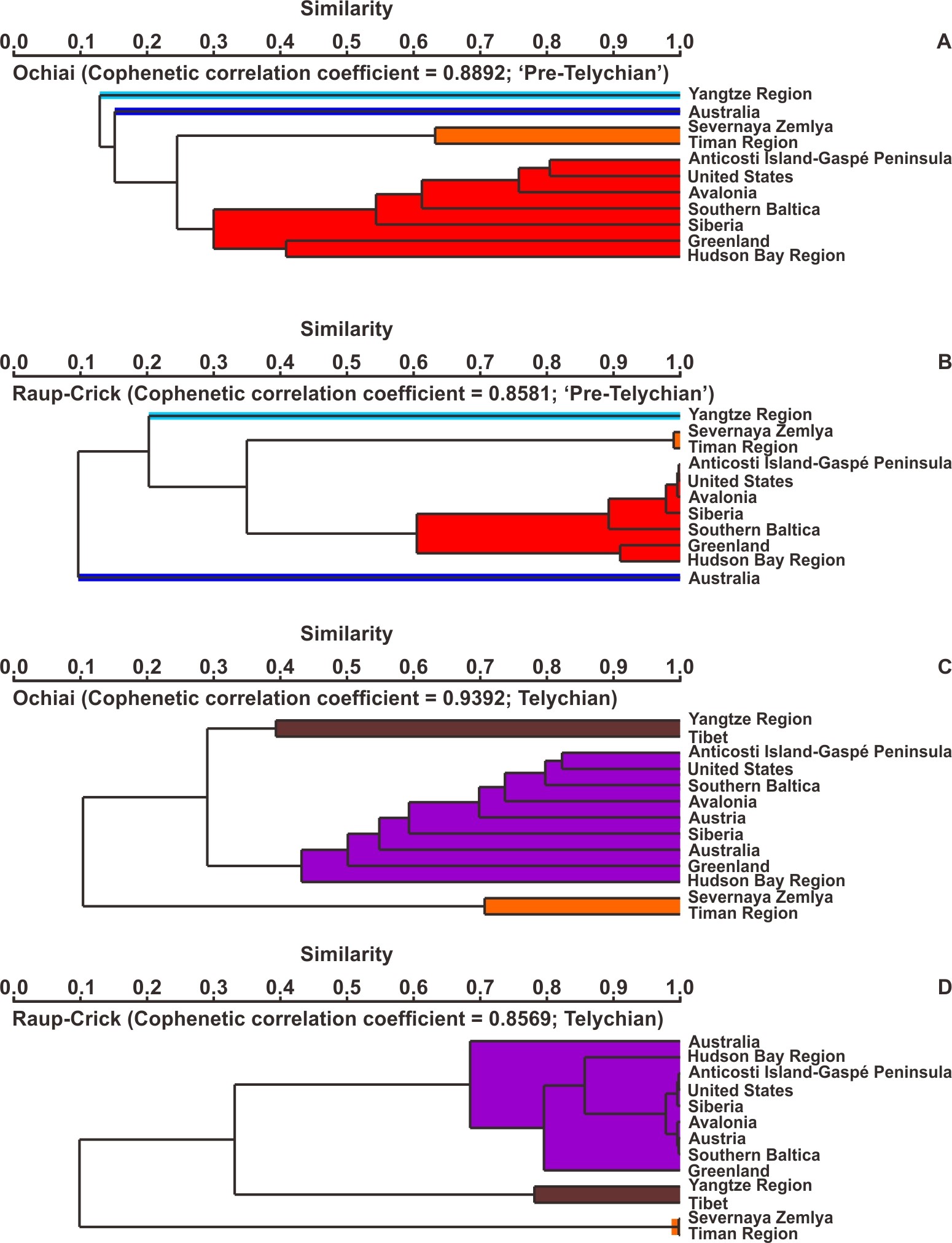
CA analysis of conodont faunas using the Jaccard and Raup-Crick similarity coefficients: A, B – ‘Pre-Telychian’ interval, C, D – Telychian interval
The Llandovery of the Silurian is an important period for the evolution of conodonts. After the end Ordovician mass extinction, conodont animal started to recover and then radiate in the Llandovery, with significant changes in the fauna and the diversity. The study on the paleobiogeographic pattern of the conodont animal, will help us understand the distribution pattern of conodont animal during the transitional period and its relationships with the paleo-environmental changes.
Recently, Dr. CHEN Zhongyang and Prof. FAN Junxuan from Nanjing Institute of Geology and Palaeontology, Chinese Academy of Sciences, together with Dr. Peep Männik from Institute of Geology, Tallinn University of Technology, Estonia, reconstructed the Llandovery conodont provincialism based on the revised conodont occurrences from 250 localities around the world. Several quantitative methods were adopted in their analyses. The result indicates a surprising, longitudinal distribution pattern, which was mostly controlled by the ocean current circulation, rather than temperature.
Moreover, they investigated the paleobiogeographic pattern of conodont animal since Early Ordovician. They found that the conodont animal showed apparent longitudinal distribution pattern during the whole Ordovician, while a sudden change happened during the Ordovician-Silurian transition. They inferred that the Hirnantian glaciation and the simultaneous mass extinction could be the major controlling factor which resulted in the reorganization of the conodont fauna and the significant change in its living habits and ecological requirement. However, additional studies and a more comprehensive data set are needed to reveal the mechanism of these changes.
The study was supported by the National Natural Science Foundation of China, Chinese Academy of Sciences and the Estonian Research Council.
Article information: Zhongyang Chen, Peep Männik, Junxuan Fan*. 2017. Llandovery (Silurian) conodont provincialism: An update based on quantitative analysis. Palaeogeography, Palaeoclimatology, Palaeoecology. https://doi.org/10.1016/j.palaeo.2017.07.023.
